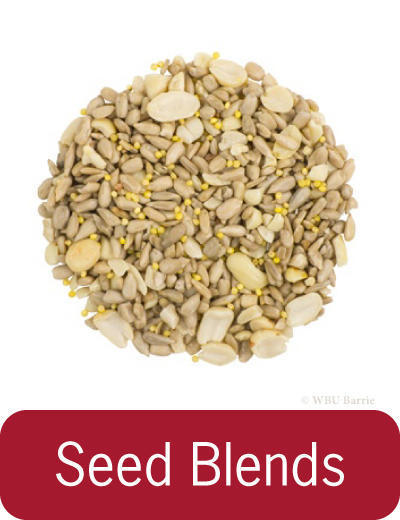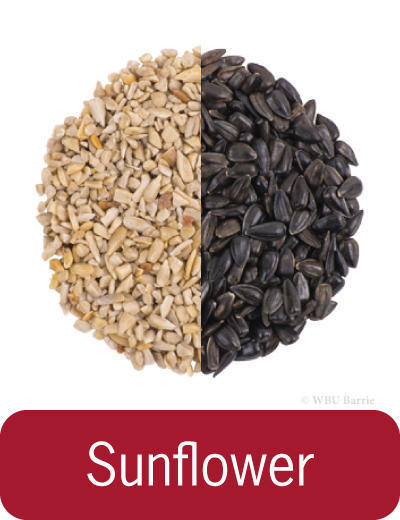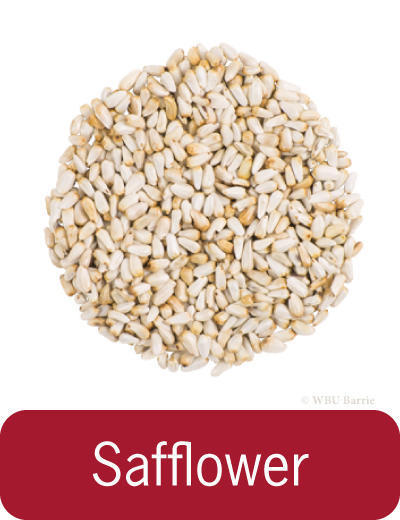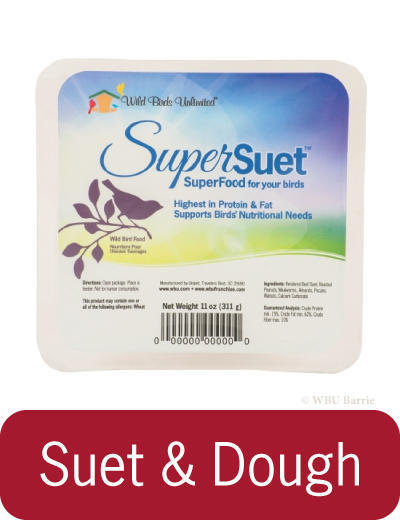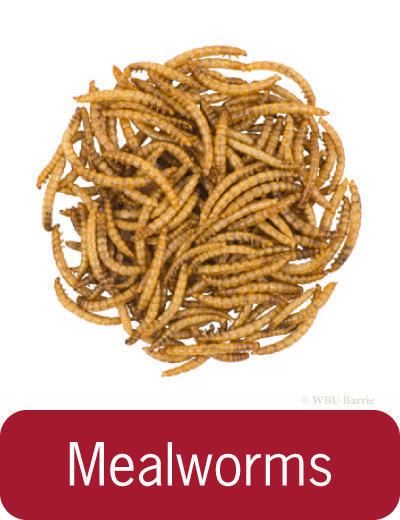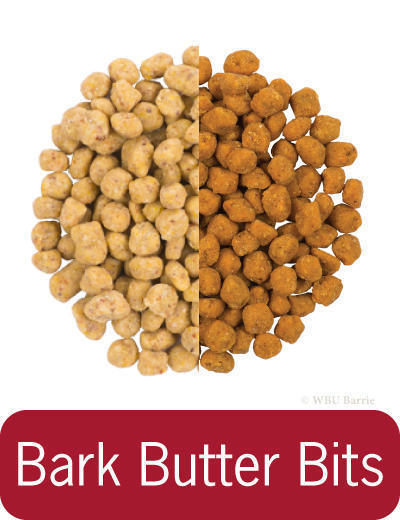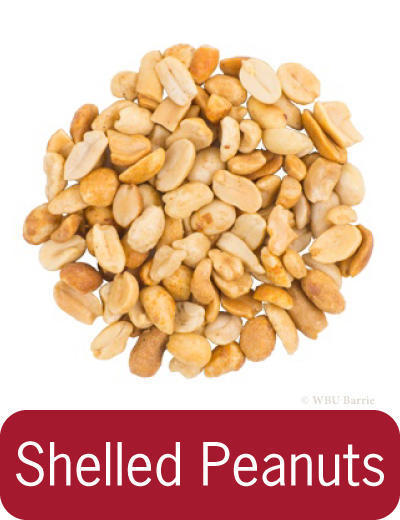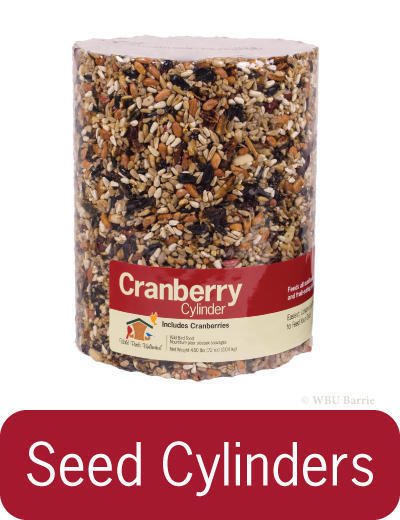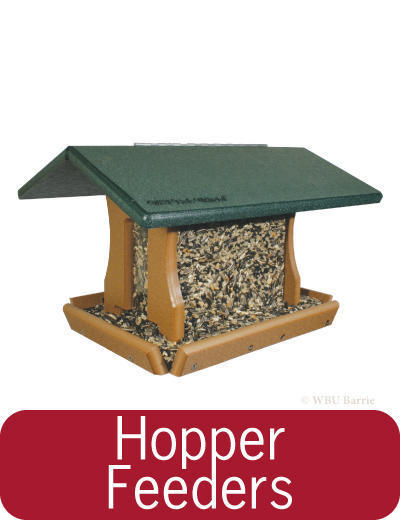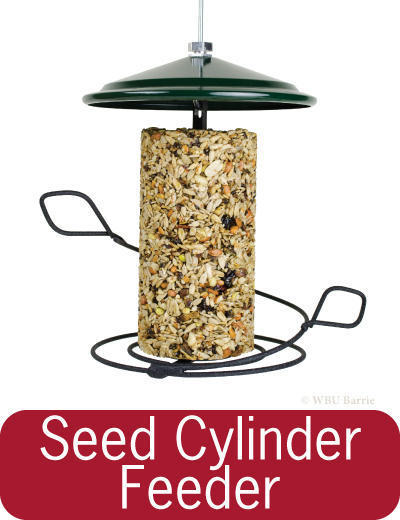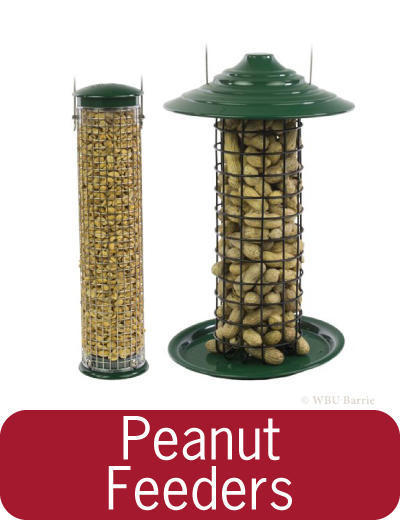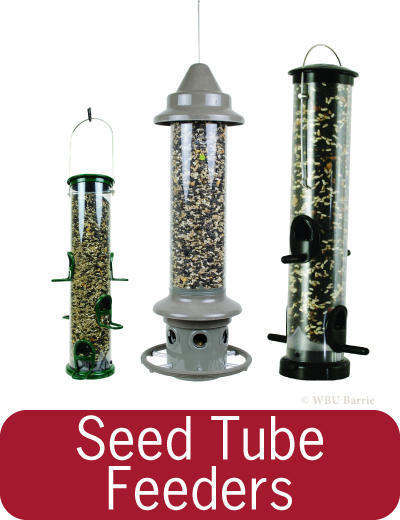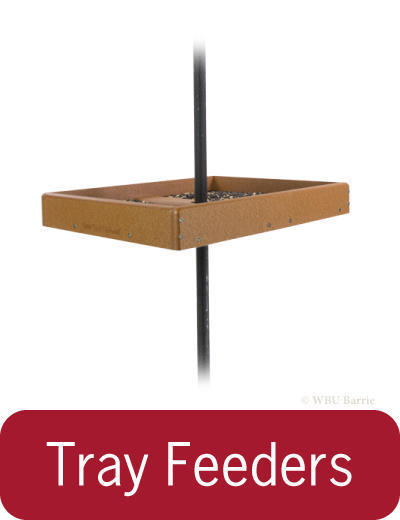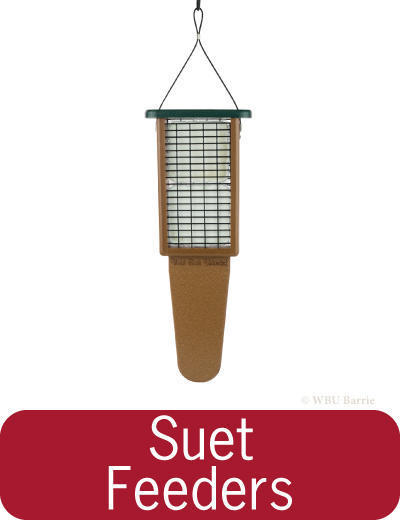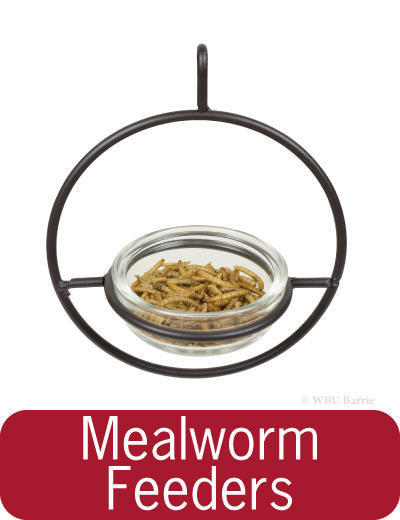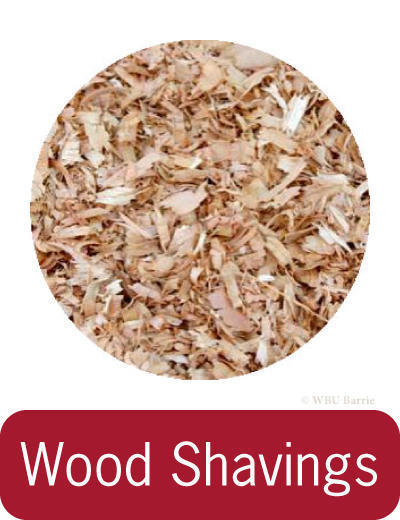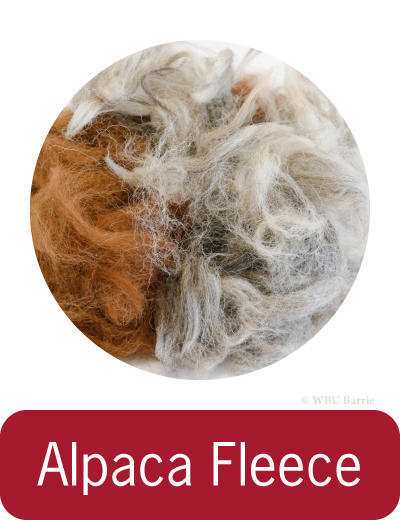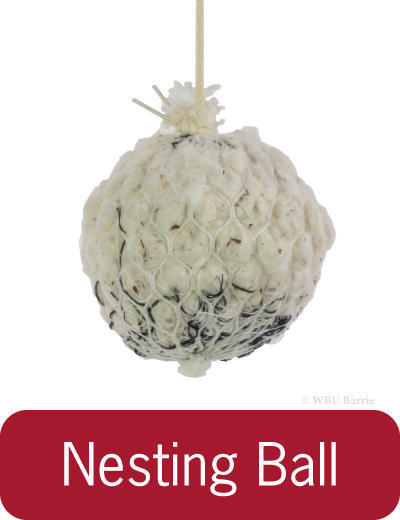Attracting Chickadees to Your Backyard
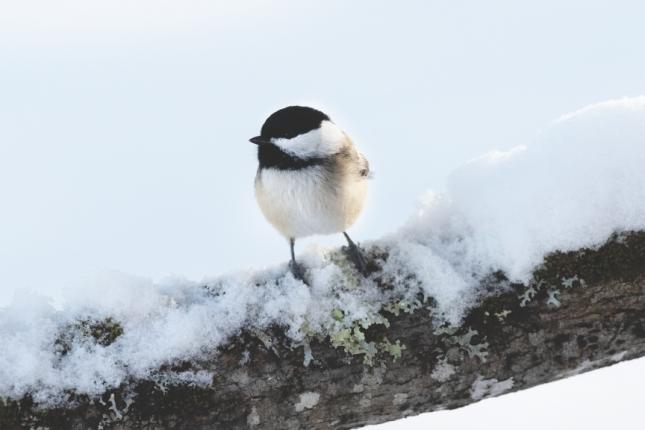 Chickadees are friendly and bold common backyard birds. They are easily identified by their namesake call “chick-a-dee.” In Ontario we have two species, the Black-capped Chickadee (top left) and the Boreal Chickadee (bottom left). Chickadees are very comfortable around people and may even take seed from your hand! Their distinct feeding style is fun to watch, as they fly to the feeder, grab a single seed, and fly back to a branch to hold the seed between their feet and break it open with their beak.
Chickadees are friendly and bold common backyard birds. They are easily identified by their namesake call “chick-a-dee.” In Ontario we have two species, the Black-capped Chickadee (top left) and the Boreal Chickadee (bottom left). Chickadees are very comfortable around people and may even take seed from your hand! Their distinct feeding style is fun to watch, as they fly to the feeder, grab a single seed, and fly back to a branch to hold the seed between their feet and break it open with their beak.
Chickadees have excellent coping tactics for surviving harsh winter weather. They cache foods and remember where they are hidden (a single chickadee can fly away with up to 1,000 seeds in one day!) In a behaviour called “scatter-hoarding,” each seed is individually hidden in a unique location. Common storage sites include under tree bark, dead leaves, knotholes, and even house siding and shingles. Scientists have also recently discovered that a chickadees brain increases in size during the winter to better remember where they hide their seeds. What an amazing little bird!
Do Chickadees Migrate?
Chickadees are non-migratory, year-round residents throughout their range.
What Do Chickadees Look Like?
Male and female have similar plumage. No seasonal plumage changes. Juvenile plumage similar to adults.
For more information visit these great resources:
Lab of Ornithology at Cornell - All About Birds - Black-capped Chickadee
Lab of Ornithology at Cornell - All About Birds - Boreal Chickadee
Foods
In the wild, the Black-capped Chickadee primarily eats insects during the breeding season with some seed and fruits. The non-breeding season finds them eating about half animal and half vegetable matter like seeds, spiders, insects, and even the fat from carrion. At feeders, Chickadees favour a variety of seeds including sunflower seeds, peanut pieces and Safflower. They will feed from a variety of feeders including tube and hopper feeders. Chickadees also enjoy suet, Bark Butter®, and Bark Butter Bits and frequent suet feeders.
Feeders
Chickadees prefer feeders that are open so they can easily grab some food. However, if you have starlings, grackles and other birds that can scare off chickadees, a covered or caged feeder with an entrance hole of 1½” is the way to go! These will allow chickadees in and keep the other birds out.
Here are some of our recommended feeders for the Black-capped Chickadee:
Birdbaths (Water)
Water is essential to all birds and providing a bird bath means they don’t have to travel great distances to find water. Water in a bird bath should be cleaned regularly as birds defecate, leave bits of food and feathers in the bath, not to mention leaves and other items that can end up in a bath. In the winter, heated birdbaths provide an excellent place for birds to drink. During the warmer months the WBU Water Wigglers and Solar Fountains create moving water in your birdbath, making the bath even more attractive to birds. WBU Barrie carries a variety of plastic, metal and clay birdbaths and accessories, as well as heated birdbaths for the colder months. Visit our page on birdbaths for a selection of styles as well as accessories like brushes, solar fountains, water wigglers and Fountain Fresh Water Clarifier.
Chickadee Houses (Nest Boxes)
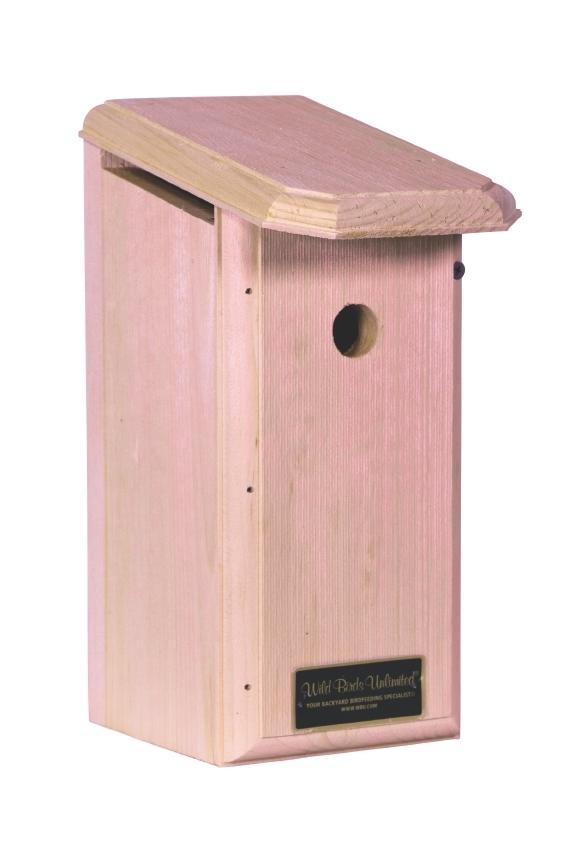 Black-capped Chickadees are partial to nesting in shaded areas, forest edges and meadows. For these birds fill the box with 4-5 inches of wood shavings to allow them to excavate their own nest. Chickadees nest boxes should have proper drainage and ventilation to keep the nest and babies dry and should be mounted 5 to 15 feet above the ground with the entrance hold away from prevailing winds on a tree, fence post or on a pole. Poles systems outfitted with a baffle, such as our WBU Advanced Pole System® (APS) Basic Setup Mounting Hardware (sold separately) tend to offer the best protection from predators.
Black-capped Chickadees are partial to nesting in shaded areas, forest edges and meadows. For these birds fill the box with 4-5 inches of wood shavings to allow them to excavate their own nest. Chickadees nest boxes should have proper drainage and ventilation to keep the nest and babies dry and should be mounted 5 to 15 feet above the ground with the entrance hold away from prevailing winds on a tree, fence post or on a pole. Poles systems outfitted with a baffle, such as our WBU Advanced Pole System® (APS) Basic Setup Mounting Hardware (sold separately) tend to offer the best protection from predators.
Roosting Boxes (Shelter)

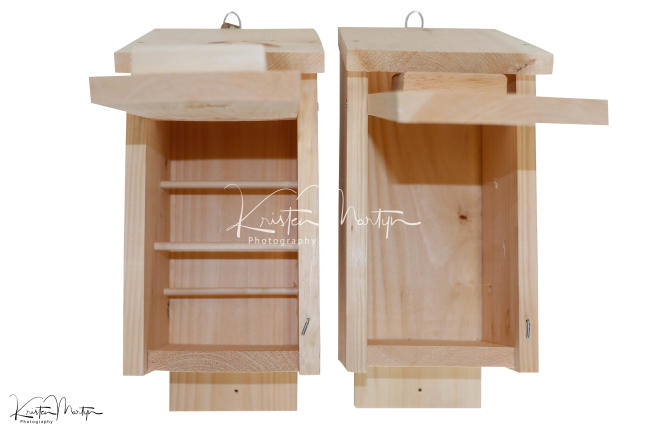 Black-capped Chickadees and other cavity dwelling birds seek shelter during cold nights of the winter months. Shelter is essential for their survival in harsh conditions. Roosting boxes provide shelter for birds on very cold nights. Roosting boxes differ from a typical bird house because they feature a hole on the bottom of the box to trap heat and three dowels on the inside of the house to accommodate multiple perching birds. At WBU Barrie we offer Convertible Winter Roosting boxes which can be flipped to convert it to a Chickadee house after the winter season.
Black-capped Chickadees and other cavity dwelling birds seek shelter during cold nights of the winter months. Shelter is essential for their survival in harsh conditions. Roosting boxes provide shelter for birds on very cold nights. Roosting boxes differ from a typical bird house because they feature a hole on the bottom of the box to trap heat and three dowels on the inside of the house to accommodate multiple perching birds. At WBU Barrie we offer Convertible Winter Roosting boxes which can be flipped to convert it to a Chickadee house after the winter season.
Nesting Material
To further entice Chickadees to use a Nesting or Roosting Box, fill the box with 4-5 inches of wood shavings to allow them to excavate their own nest. Hanging nesting material, such as Alpaca Fleece or our WBU Nesting Material Ball, will further encourage them to take up residence in our yard, and will add to your viewing pleasure as they will spend more time in your yard gathering their nesting materials.
Fun Facts
-
Chickadee’s wing beats are about 27 times per second. This compares to a hummingbird’s 80 beats per second.
-
The Black-capped Chickadee primarily eats insects during the breeding season with some seed and fruits. The non-breeding season finds them eating about half animal and half vegetable matter like seeds, spiders, insects, and even the fat from carrion.
-
Chickadees have excellent coping tactics for surviving harsh winter weather. They cache foods and remember where they are hidden, have dense winter coats, diligently find excellent, well-insulated roosting cavities and can perform a regulated hypothermia to conserve energy overnight.


